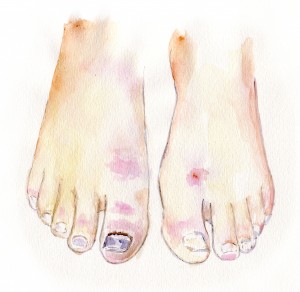Boot bash is exactly what it sounds like, an injury to your feet caused by bashing them around inside your ill-fitting boots. For the outdoor enthusiast and hiker, one of the most important pieces of equipment is properly fitted boots—boots that support the ankle and protect against ankle sprains; boots that fit well, thus preventing blisters; and boots that are worn and laced properly to prevent boot bash.
Over the last few years of the Wilderness Medicine Newsletter, the way we react to, and interact with, our environment has become a common theme—in particular, our physiological abilities to cope with heat and cold (thermoregulation) and balance our hydration and electrolyte needs. We decided that it would be a good idea to compile all this information, summarize it, and put it into one handy resource. So here you go.
March/April 2009 ISSN-1059-6518 Volume 22 Number 2
SOLO International
/in Medical Response, Rescue Training, Teaching Wilderness Medicine, Travel Medicine/by WMN EditorsMay/June 2009 ISSN-1059-6518 Volume 22 Number 3
Disclaimer: The content of the Wilderness Medicine Newsletter is not a substitute for Read more
Poison Ivy, Poison Oak, Poison Sumac
/in Allergies, Environemtal Injuries, Poisons, Rash/by WMN EditorsMay/June 2009 ISSN-1059-6518 Volume 22 Number 3
When to seek medical care?
As with any allergic reaction, if you begin Read more
Boot Bash
/in Feet/by WMN EditorsMay/June 2009 ISSN-1059-6518 Volume 22 Number 3
Illustrations By T.B.R. Walsh
Boot bash is exactly what it sounds like, an injury to your feet caused by bashing them around inside your ill-fitting boots. For the outdoor enthusiast and hiker, one of the most important pieces of equipment is properly fitted boots—boots that support the ankle and protect against ankle sprains; boots that fit well, thus preventing blisters; and boots that are worn and laced properly to prevent boot bash.
your ill-fitting boots. For the outdoor enthusiast and hiker, one of the most important pieces of equipment is properly fitted boots—boots that support the ankle and protect against ankle sprains; boots that fit well, thus preventing blisters; and boots that are worn and laced properly to prevent boot bash.
Read more
A Summer Primer: Heat related Injuries
/in Heat related Injuries, Heat Stroke/by WMN EditorsOver the last few years of the Wilderness Medicine Newsletter, the way we react to, and interact with, our environment has become a common theme—in particular, our physiological abilities to cope with heat and cold (thermoregulation) and balance our hydration and electrolyte needs. We decided that it would be a good idea to compile all this information, summarize it, and put it into one handy resource. So here you go.
March/April 2009 ISSN-1059-6518 Volume 22 Number 2
Read more